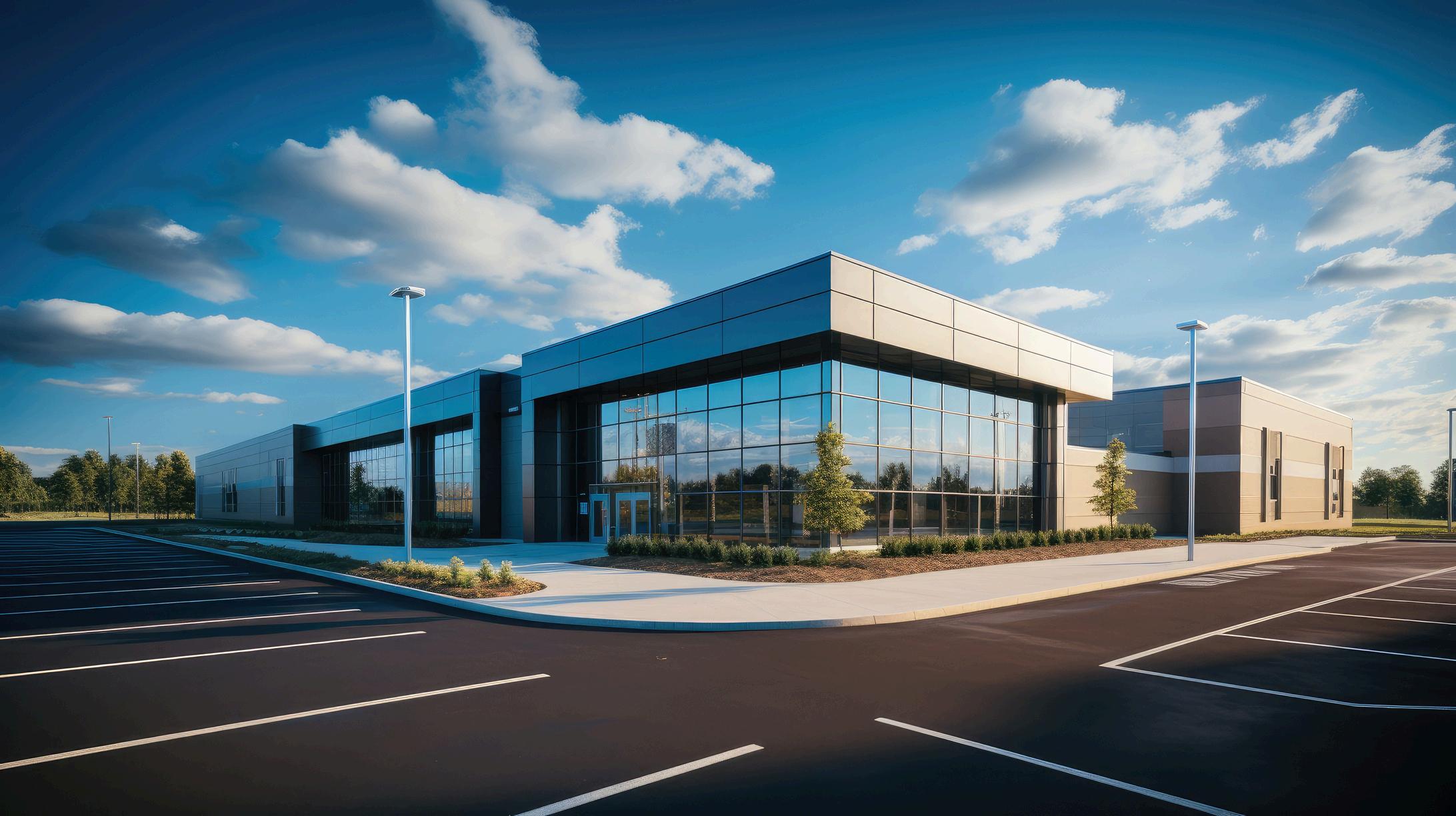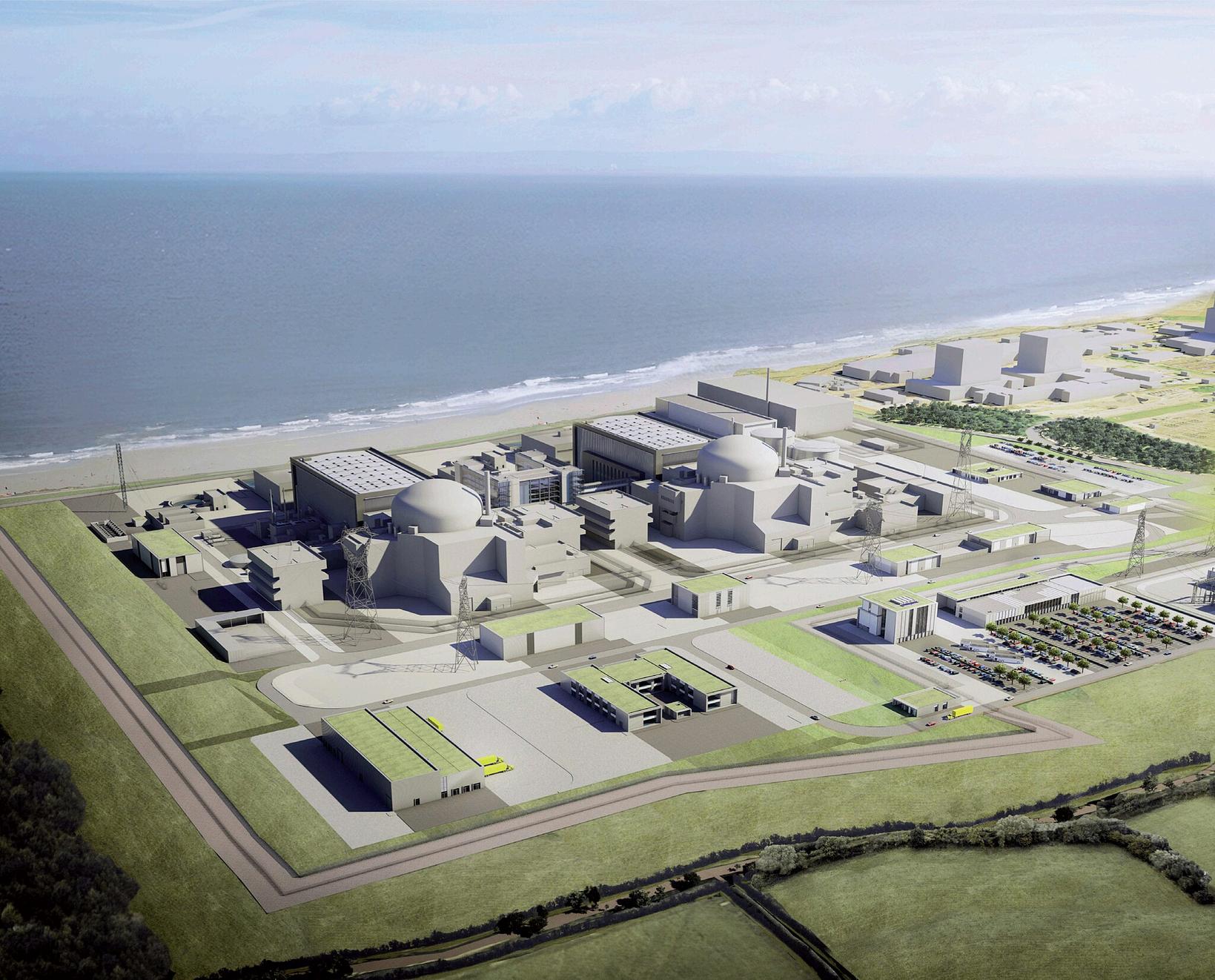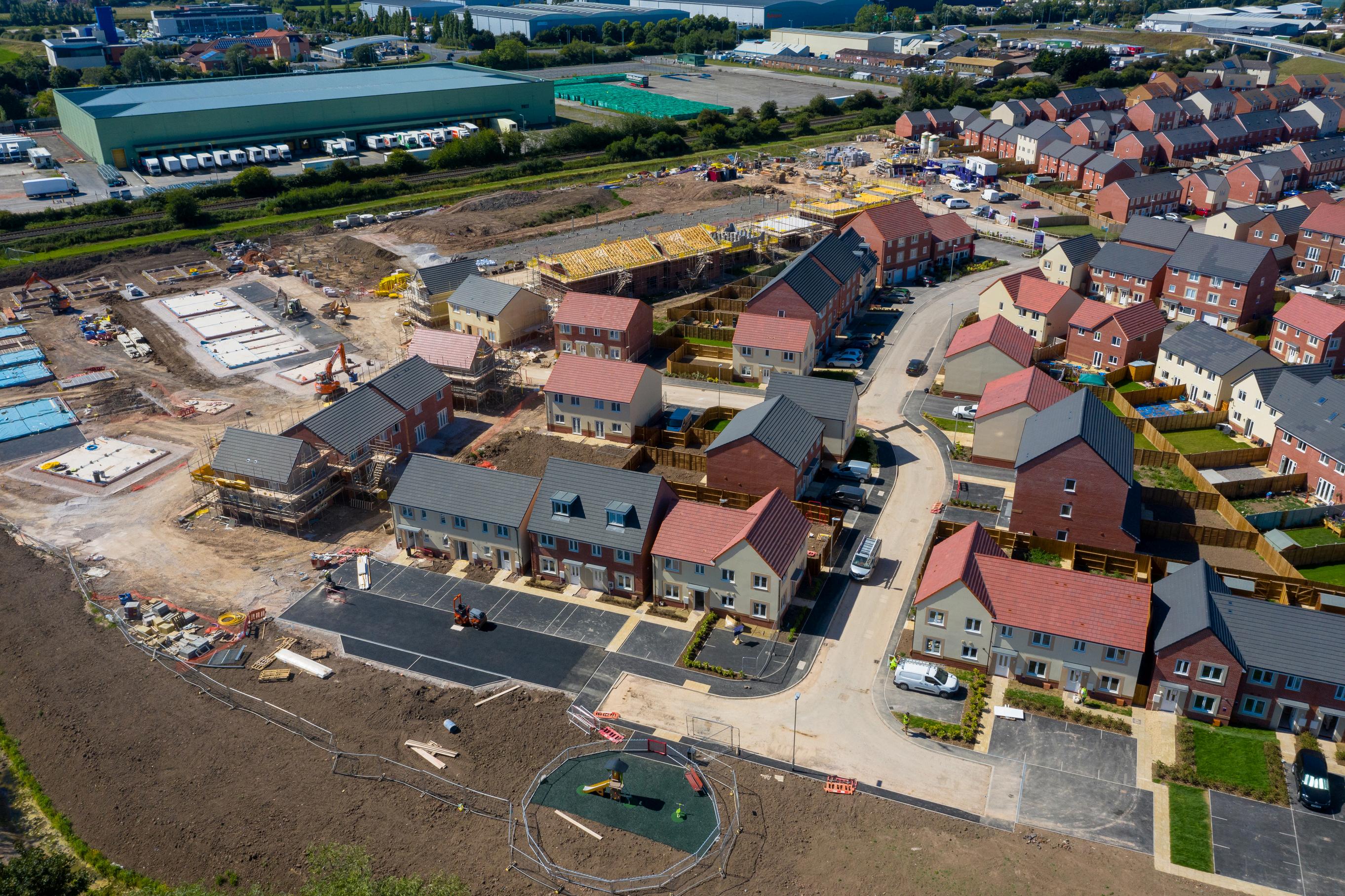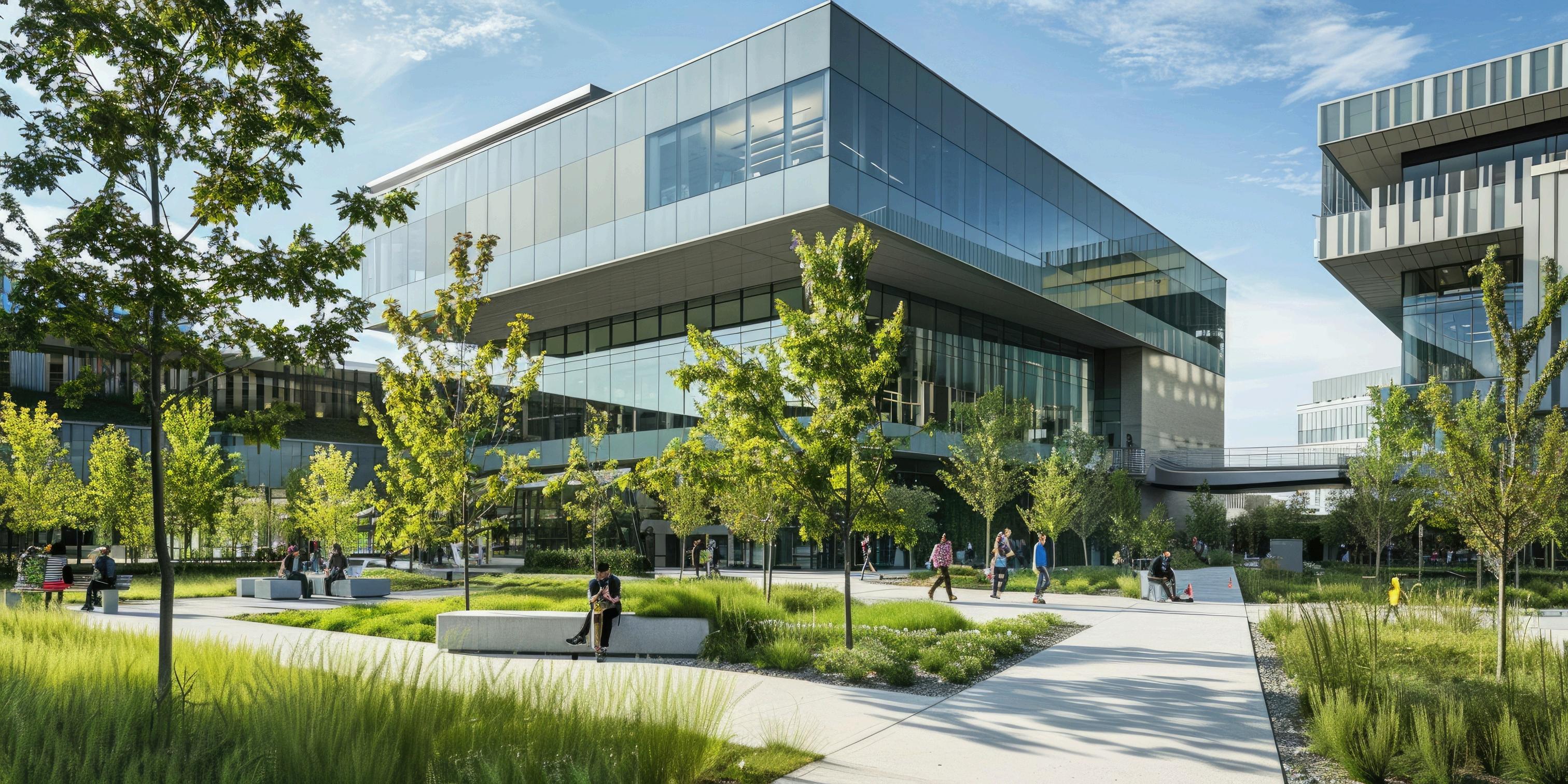



morson-group.com






morson-group.com

Building One and ancillary development comprises 244,710 sqm GEA of built area, more than 35% larger than Wembley Stadium which covers approximately 180,000 sqm GEA.
Sir Robert McAlpine will now start preparations for the development, which is scheduled to be operational in 2026 Preparatory works have been underway since Spring 2024.
Once all phases of construction are complete, the facility is set to be the biggest of its kind in the UK and by the early 2030s will contribute almost half of the projected battery manufacturing capacity required for the UK automotive sector
The development of Building One will require approximately 2,100 construction roles at peak times, many across Tier 3 and 4 of the supply chain.

Together Agratas and Sir Robert McAlpine will deliver a Workforce Development Strategy to realise a local first approach prioritising surrounding communities and fostering strong regional employment opportunities.
In this landscape paper we shall review the panorama in the Bridgwater area of Somerset, starting with geographic demographic and economic aspects, then moving though into the most impactful industrial activities in the area. We shall deep dive into the impact of activity around the Hinkley Point C build, of which we have extensive involvement, and paint the picture of how it has shifted the total talent landscape, both near and far


Bridgwater lies in the valley of the River Parrett, at the edge of the Somerset Levels, surrounded by the Mendip Hills to the northeast and the Quantock Hills to the southwest. The town had a population of approximately 41,276 as of the 2021 census It serves as the administrative centre for the Sedgemoor District and is well-connected via major transport routes, including the M5 motorway and a railway line linking it to Bristol and Taunton
Historically an industrial hub Bridgwater's economy has diversified over time While it was once centred around textile manufacturing, today it includes various industries such as brick and tile production, heavy engineering and brewing The town maintains a significant industrial base alongside its historical roots.
AGRATAS Build Landscape Intelligence Paper
While historically known for brick and tile manufacturing, Bridgwater now has a more diverse industrial and commercial base.
With good links to the motorway system, Bridgwater has developed as a distribution centre for companies such as Argos, Toolstation, and Gerber Juice
The town is involved in food and drink manufacturing, including:
Gerber Products Company, the largest producer of fruit juices in Europe, making brands like 'Sunny Delight' and Ocean Spray' Brewing industry
The town has some heavy engineering industries, these include:
Berry Escott - Specialises in steel fabrications, design, CNC machining and project management
Trelleborg Sealing Solutions - Manufactures high-performance seals in advanced PTFE materials







Though reduced from its peak, some port trade still continues, with the river navigable for vessels up to 200 tons.
Recent developments like the Bridgwater Gateway and Somerset Energy and Innovation Centre aim to attract businesses, particularly those involved in the Hinkley Point C nuclear power station supply chain.
The Somerset Energy and Innovation Centre houses offices and provides support for businesses involved in energy-related industries.
While Bridgwater's industrial profile has changed significantly over the years, it maintains a diverse range of manufacturing and distribution activities, with efforts to develop new sectors, particularly around energy and technology.
AGRATAS Build Landscape Intelligence Paper
The build of Hinkley Point C is the most significant competitive activity in the South West of England, currently the largest construction site in Europe.
So what do we know about Hinkley Point C?
Hinkley Point C is a major nuclear power station currently under construction in the Bridgwater area of Somerset – the first, new, nuclear power station building over 20 years
It will consist of two EPR (European Pressurised Reactor) nuclear reactors.
Each reactor will have a capacity of 1 6 GWe, for a total of 3 2 GWe
Once operational, it s expected to generate about 26 TWh of electricity annually, enough to power around 6 million homes.
Construction began in 2016.
The project has faced several delays. As of January 2024, the first unit is now expected to be operational between 2029 and 2031.
It s currently the largest construction site in Europe
The project cost has increased significantly since inception.
Latest estimates put the cost between £31 billion and £35 billion (in 2015 prices)
It s financed by EDF Energy (66 5%) and China
General Nuclear Power Group (33 5%)
HPC is expected to offset about 9 million tonnes of CO2 emissions annually.
It s part of the UK's strategy to transition to lowcarbon energy sources.

AGRATAS Build Landscape Intelligence Paper
TECHNOLOGICAL SIGNIFICANCE:
HPC will be the UK's first new nuclear power station in over 20 years
It s using advanced EPR technology, designed for improved safety and efficiency
The project has faced criticism over its cost, delays, and the involvement of Chinese investment. There have been debates about the role of nuclear power in the UK's future energy mix.
LOCAL IMPACT:
The project is having a significant impact on the local area, including Bridgwater, the closest town to the site
It s led to investments in local infrastructure, education, and business development
Referring to the most recent updates, the expected timeline for the completion of Hinkley Point C has been revised as follows:
1. The project is now aiming to bring Unit 1 into service "around the end of the decade".
2 EDF has outlined three scenarios:
The first scenario targets becoming operational in 2029. This is based on achieving target productivity for the electromechanical work.
The second scenario, considered the "base case " , assumes some risks in the electromechanical work and testing schedule materialise, resulting in Unit 1 becoming operational in 2030
The third scenario, accounting for further potential delays, could see Unit 1 operational in 2031
3. This represents a significant delay from the previous target of June 2027, which was announced in May 2022.
4 The delays are attributed to various factors, including the COVID-19 pandemic (which caused a 15-month delay), inflation, labor and material shortages, and disruptions from Brexit.
5. The project has faced numerous setbacks since construction began in 2016, with the completion date being pushed back several times
*It is important to note that these are current estimates and, given the project's history of delays, further changes to the timeline are possible. The completion of Unit 2 is expected to follow Unit 1, but specific dates for the second unit were not provided in the latest update.
Hinkley Point C represents a major investment in the UK s energy infrastructure and is set to play a significant role in the country's future energy supply and efforts to reduce carbon emissions



Apprenticeships are available at various levels, from Intermediate (Level 2, equivalent to five GCSEs) up to Degree Apprenticeships (Level 6-7, equivalent to Bachelor s or Master's degrees).
For professional roles, degree-level qualifications in relevant fields are often required
Good English and math skills are essential for safety and productivity. Many employers look for at least GCSE grade C in each subject.
Nuclear Engineers: Typically require a degree in nuclear engineering or related field.
Project Managers: Often need qualifications in project management and relevant industry experience.
Health and Safety Officers: Qualifications in occupational health and safety are usually required
For those aged 16-21, the Young HPC program offers opportunities to develop skills and potentially fast-track into roles
Most workers require security clearance, which involves background checks on criminal records, financial history, and references.
As we can see, Hinkley Point C offers opportunities across a wide range of skill levels and disciplines.
AGRATAS Build Landscape Intelligence Paper
Most in demand roles required by Hinkley Point C, as we close out 2024
Some of the most in-demand roles at Hinkley Point C currently include:
CIVIL & STRUCTURAL ENGINEERS
QUANTITY SURVEYORS
PROJECT MANAGERS DOCUMENT CONTROLLERS
QUALITY ASSURANCE ENGINEERS & MANAGERS PLANNERS
MECHANICAL ENGINEERS
ELECTRICAL ENGINEERS WELDERS PIPEFITTERS
The project is particularly looking for candidates with:
Experience in nuclear or major infrastructure projects
Specialised skills in mechanical, electrical, and instrumentation engineering
Expertise in welding, steelwork, and pipe installation
Additionally, there is a strong focus on apprenticeships and training programs across various disciplines, including:
Construction skills
Welding
Electrical work
Mechanical skills
The project has announced 30,000 new training places to help fill skill gaps, particularly in areas like electrical work, welding, steelwork, and pipe installation It is worth noting that the specific roles in demand may vary depending on the current phase of the project
As Hinkley Point C moves through different stages of construction and towards operation, the types of skills and roles needed will likely evolve.

It is worth reviewing & considering the talent creation activities being undertaken to deliver Hinkley Point C. It is reasonable to assume this has set perceptions and expectations of new commercial activity & connections to the community and talent.
Hinkley Point C offers a wide range of job and training opportunities across various sectors.
Hinkley Point C provides a vast array of employment and training opportunities, from entry-level positions to highly specialised roles, with a strong focus on local employment and skills development.
The project aims to create 25,000 job opportunities during construction
Over 1,000 apprenticeships have already been created, with plans to continue growing this number
Construction roles: Civil and structural engineers, project managers document controllers.
Specialised skills: Mechanical and electrical engineers, quality assurance engineers and managers, planners, quantity surveyors.
Support roles: Administrative and logistical positions
HPC aims to create 1,000 apprenticeships during construction
Apprenticeships are available across a wide range of occupations.
Opportunities exist in both construction and operational phases of the project.
EDF Energy has invested in local skills development, including funding for a new Construction Skills and Innovation Centre
The project has redeveloped Cannington Court to become the EDF Energy Campus Management and Skills Training Centre.
An "Access to Apprenticeships" scheme helps those who need assistance in reaching apprentice entry level.
A dedicated Hinkley Point C Jobs Service works to match local people to job opportunities.
The project aims to equip local people with necessary skills, ranging from construction and energy to business and enterprise.
We can see that delivering such a sizeable project in a climate of skilled trades and engineering shortages has thrown up some significant challenges. So, how has the Hinkley Point build addressed skills shortage issues?
The project has implemented several initiatives to address potential skills gaps and create a skilled workforce:
Hinkley Point C has invested £24 million into education, skills and employment initiatives.
The project has created three Centres of Excellence and a Construction Skills and Innovation Centre, which have trained over 8,000 people since opening in 2022
The project has created over 1,000 apprenticeships so far, with a goal of creating 1,000 apprenticeships during the construction phase.
1,320 apprentices have been trained in various skills, including hospitality, accountancy, project management, and surveying.
A dedicated Hinkley Point C Jobs Service works to match local people to job opportunities.
3,500 people from within 90 minutes of the construction site are helping build the nuclear power station. 63% of apprentices trained are from within 90 minutes of the construction site





The project has implemented an "Access to Apprenticeships" scheme to help those who need assistance in reaching apprentice entry level.
Specialised training is provided in areas such as welding, electrical work, mechanical skills, and construction.
Hinkley Point C was awarded the ECITB Skills and Training Charter Gold Standard, recognising its commitment to developing a skilled workforce.
Almost one-third of those being trained are from the most deprived areas of Britain indicating efforts to broaden the talent pool.
Evidence suggests that Hinkley Point C has been proactive in developing the skills needed for the project and creating opportunities for local and national workers.
Providing upskilling and training for local communities has been at the forefront of the Hinkley Point C training activities
AGRATAS Build Landscape Intelligence Paper
LOCAL EMPLOYMENT:
3,500 people from within a 90-minute radius of the construction site are currently working on the project
OVERALL TRAINING NUMBERS:
Over 14,000 people have been trained for the project so far
LOCAL TRAINING INITIATIVE:
The project has established a dedicated Hinkley Point C Jobs Service to match local people to job opportunities.
REGIONAL IMPACT:
The project has created significant employment opportunities in Somerset and the wider South West region
If we consider the 3,500 people from within a 90-minute radius as "local" and assume they have all been through the training program, this would represent approximately 25% of the total 14,000 people trained. However, it's important to note that:
This is an approximation based on the available data 1 The definition of "local" may vary depending on the specific context. 2
3. The actual percentage could be higher or lower depending on how many of the 14,000 trained individuals are from the local area but not currently working on the project 4.
The 3,500 figure refers to those currently working on the project, not necessarily all those who have been trained.
Without more specific data, it's not possible to provide an exact percentage of trainees who are local residents. The project does appear to have a strong focus on local employment and training, but the precise proportion of local trainees is not clearly stated in the available information


As skilled workers follow the opportunities to the South West of England there has been a significant impact upon accommodation availability in the region, to house the migrating workers. Some travel weekly around shift patterns, others have relocated for the mid/long term.
As accommodation for travelling talent is a pivotal part of the decision to accept work on certain projects, let’s look further at this impact in the Bridgwater area.
HOUSING PRESSURE
The influx of workers has led to a surge in demand for housing in Bridgwater and surrounding areas.
At peak construction, around 5,600 workers are expected on site, with many requiring local accommodation.
The project has put pressure on the local housing market, particularly in the private rented sector.
There are concerns about the displacement of local residents, especially those on lower incomes or in receipt of housing benefit
PURPOSE-BUILT ACCOMMODATION

Two campus-style developments have been built to house workers:
A 986-bed campus at Bridgwater town center (Sedgemoor Campus)
A 510-bed campus at Hinkley Point C site
These campuses aim to reduce pressure on local housing stock
Some landlords have shifted from long-term rentals to short-term lets to accommodate construction workers, potentially reducing options for local residents. Rental prices have increased due to the higher demand.
There's been an increase in property purchases in the area, partly attributed to the Hinkley Point C project.
Some reports suggest a rise in house prices, though this may also be due to other factors.
Sedgemoor District Council has implemented measures to monitor and manage the impact on the local housing market.
The council has worked with EDF Energy to mitigate negative effects on local accommodation availability
There are concerns about the long-term impact on the housing market once the construction phase is complete and worker numbers decrease.
While causing housing pressures, the project has also brought economic benefits to the area, including job creation and increased spending in local businesses.
EDF Energy has implemented strategies to manage worker accommodation including the use of park and ride facilities to reduce the need for all workers to live close to the site.
In review, while Hinkley Point C has created challenges in the local housing market, efforts have been made to mitigate these effects through purpose-built accommodation and collaboration between the project developers and local authorities. The impact on accommodation availability and affordability remains a significant concern for the Bridgwater area.
The Hinkley Point C project has indeed affected pay rates in the Bridgwater area.
The project has led to wage inflation in the local area, particularly for skilled workers.
Some reports suggest that local businesses are struggling to compete with the higher wages offered at Hinkley Point C.
Hinkley Point C offers competitive salaries to attract and retain skilled workers
This has put upward pressure on wages in the surrounding area, as other employers try to match these rates
The construction and engineering sectors have seen significant wage increases due to the high demand for skilled workers at Hinkley Point C
Other sectors, such as hospitality and retail, have also been affected as they compete for workers
The project has created a shortage of skilled workers in some areas, leading to increased wages as employers compete for available talent.
The higher wages associated with Hinkley Point C have contributed to a general economic boost in the region.
This has led to increased spending power for those employed on the project, affecting the local economy AGRATAS Build Landscape Intelligence Paper

AGRATAS Build Landscape
Some local businesses report difficulties in retaining staff or hiring new employees due to the inability to match Hinkley Point C wages.
There are concerns about the long-term impact on local wage structures once the construction phase of Hinkley Point C is complete.
BROADER ECONOMIC CONTEXT:
While Hinkley Point C has had a significant impact, it's important to note that other factors such as general economic conditions and national wage trends, have also influenced pay rates in the area
POSITIVE ECONOMIC IMPACT:
Despite challenges, the overall economic impact of the project, including higher wages, is generally seen as positive for the region
The Hinkley Point C build has had a significant positive impact on local employment rates in Bridgwater and the surrounding area:
The project has created 23,500 jobs so far at Hinkley Point C.
It's expected to provide 900 permanent jobs for at least 60 years once operational.
Local employment growth is double that seen across the South West region
The Sedgemoor area (which includes Bridgwater) has seen a 25% growth in younger people aged 25-39, which is three times greater than the national average.
Over 8,000 people have been trained in Hinkley Point C's new Centres of Excellence
1,320 apprentices have been trained so far in various skills including hospitality, accountancy, project management, and surveying
The project aims to offer 30,000 training places over the lifetime of the construction.
63% of apprentices trained are from within 90 minutes of the construction site.
The HPC Jobs Service is helping local people get jobs on the project
AGRATAS Build Landscape Intelligence Paper
Almost one-third of those being trained come from officially deprived areas, indicating a positive impact on employment in disadvantaged communities.
The Sedgemoor area is seeing growth in small and medium-sized companies that is ten times higher than anywhere else in the South West
Ten new companies employing 250-500 people have been established since 2011.
Productivity in Bridgwater is now 10% higher than surrounding towns, suggesting higherquality employment opportunities
The project is described as a catalyst for long-term growth, leaving a legacy of a more skilled and productive workforce.
The project has drawn thousands of workers to the area, with around 10,000 people on site each day at peak construction.
The project is providing an opportunity for young people to stay and thrive in West Somerset and Sedgemoor, an area that previously had a history of low social mobility and an aging population.
Workers have been attracted from across the South-West of England and South Wales, ranging from places like Minehead and Burnham-On-Sea to Port-Talbot and Pontypridd


When we look at the socio economic impact of the Hinkley Point C build by EDF, we can see the benefits experienced by both the South West area and the wider UK. Let’s review the headlines;
The project represents an £18 billion investment in the UK economy
Over 64% of the contract value has been awarded to UKbased companies, exceeding the initial target of 57%.
£3.2 billion has been spent with companies in the South West more than double the original £1.5 billion target. The project is projected to create 71,000 jobs across the UK.
More than 8,000 people have been trained in Hinkley Point C's "Centres of Excellence" for various skills.
756 apprentices have been trained on the project to date. Almost a third of those trained come from officially deprived areas, contributing to social mobility.
The project has boosted the local economy, helping it outperform national trends in growth and productivity. Over 3,800 British companies are involved in the supply chain.
234 educational institutions were engaged in 2020, promoting STEM education
Hinkley Point C will help avoid the emission of around 9 million tonnes of carbon dioxide per year. The project is committed to increasing local biodiversity, with 65,000 trees and shrubs planted to date.
The power station will provide low-carbon electricity to meet 7% of UK demand, powering around 6 million homes. It represents a 100-year commitment to the area, promising lasting social and economic benefits.

100,000 lorry loads will be taken off local roads by using ships to deliver materials directly to Hinkley Point C. The stone arrives at Bristol Port by rail as part of the strategy to cut congestion and reduce carbon emissions by half compared to transporting freight only by road
100,000 lorry loads will be taken off local roads thanks to Hinkley Point C’s own jetty
Hinkley Point C’s steel reinforcing is made from 98% recycled steel sourced in the UK This means the CO2 impact is around a quarter of what it would be using new imported steel The project is also re-using excess materials in the local community – including Bridgwater’s Guy Fawkes Carnival where we plan to use surplus wood and metal to create the unique carts. of Hinkley Point C’s steel reinforcement is sourced from recycled materials in the UK 98%.
65,000 trees and shrubs have been planted in and around the construction site to date
We can see that the Hin various aspects from co as changing the existing
The Bridgwater Som connection
The Hinkley Point C impact on talent ab
Hinkley Point C has period.
In its build of Hinkle skills gaps and avail


Considering the significant investment in the community & wider socio- economic benefit stemming from the HPC build, it is reasonable to advise that SRM will need to create their own bespoke approach to reskilling, upskilling and training programme
This may include both localised and wider reaching training schemes featuring groups such as ‘return to work’ initiatives (maternity leave returners & return from retirement populations). Reviewing the potential of Military Service Leaver communities (due to the SW location being well placed for tri-service leavers) may offer adjacently skilled populations as they transition and resettle into civilian life These populations may require lesser reskilling due to previous relevant experience within military roles
There may also be potential in reviewing the talent available in building ex-offenders transition to work schemes.
The above considerations will benefit SRM’s social value score

Security Clearance required by HPC opens an opportunity for skilled workers who cannot clear security to work at HPC – not all reasons for failure to achieve security clearance are troublesome Reasons people may not reach SC clearance can include but are not limited to; unverified employment gaps, debts or CCJs, frequent changes of address or insufficient UK residency.
Intelligence Reporting to support with Talent Mapping of skills and job families – utilising both open and proprietary data to paint a realistic picture of talent availability and next steps advisory. We can also provide market pay rate benchmarking so you can rest assured you ’ re not paying over the odds for talent.
Academic based research projects to identify the brand draw of SRM across the required talent communities enabling effective investment in targeted attraction & retention campaigns
Creating careers landing pages for the project itself through the Morson Group website –enabling the redirection of significant traffic towards SRM projects.



